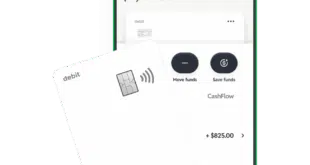Leading U.S.-based point-of-sale terminal maker VeriFone Systems Inc.’s retreat from its role as merchant acquirer for its Sail mobile-payments platform for micro-merchants last week after only seven months is triggering intense debate among independent sales organizations and payments-industry veterans. The crux of the debate concerns whether processing for tiny merchants using smart phones to accept payment cards is profitable, and if a shakeout in the increasingly crowded mobile-payments industry is at hand.
San Jose, Calif.-based VeriFone launched Sail in May as a mobile-payments service competing with Square Inc., Intuit Inc.’s GoPayment, and various services from ISOs that provide tiny businesses or even part-time sellers with a card swipe that plugs into a smart phone as well as software to handle transactions. VeriFone has an in-house ISO that apparently managed the Sail portfolio. But last week, VeriFone chief executive Douglas Bergeron told stock analysts that “acquiring for these merchants is unprofitable.” Instead, VeriFone said it would work with its traditional channel partners, such as ISOs, to supply Sail-branded technology for serving micro-merchants.
Some observers noted that Square, a headline-grabbing startup that has raised more than $200 million in venture capital, was too entrenched in the micro-merchant niche for VeriFone to dislodge. Square launched its service in 2010. “This tells us is that the strategy of going head to head with Square is a silly thing to do,” says mobile-payments consultant Todd Ablowitz of Centennial, Colo.-based Double Diamond Group. “They have a long lead, fabulous marketing, and a very low-cost operation.”
But Bergeron’s comments bluntly reflected what many ISO executives have been whispering in the face of fawning headlines about Square’s latest move or the entry of yet another player in the micro-merchant space: that it’s hard to make money processing for tiny merchants because of the lack of scale and high risk.
“The one thing I will give VeriFone credit for is being quick to act,” says Henry Helgeson, chief executive of Merchant Warehouse, a Boston-based ISO. “I think this was a very tough decision for them to grapple with. They followed their spreadsheet, not their emotions.”
Back in 2009, in the early days of smart-phone payments services for pint-size merchants, Merchant Warehouse began offering a free payments application in Apple Inc.’s App Store bundled with a merchant account. The processor quickly booked many new customers, but they were “transient merchants” with low transaction volumes but high attrition rates and high risks, according to Helgeson. “The margins weren’t there,” he says.
There is profit in processing for micro-, or so-called Tier 5, merchants, but only if the acquirer has a consumer application to complement its merchant offering, Helgeson believes. And so far, he says, only two companies are doing that: Square, which can drive consumers into Square-accepting stores with its Square Wallet app that has geo-location technology, and PayPal Inc. “You really need both sides of the puzzle here,” he says.
But some players in this game see VeriFone’s move as specific to VeriFone, not indicative of larger market economics. Marc Gardner, founder and chief executive of the Troy, Mich.-based ISO North American Bancard (NAB), which offers the Pay Anywhere service for mobile merchants, says there’s money to be made from micro-merchants.
VeriFone, Gardner notes, never was a processor, risk manager, or customer-support provider for small merchants before it rolled out Sail. “I think he [Bergeron] is correct that for VeriFone, it wasn’t profitable,” he says. “Their core competency was at the enterprise-level customer.”
Pay Anywhere, in contrast, has proven to be a good business since its February 2011 launch by drawing on NAB’s experience in managing merchants, a distribution network that includes Wal-Mart Stores Inc., The Home Depot Inc., and other national retailers, and what Gardner calls a “feature-rich” solution that will be enhanced further in 2013. Earlier this fall, NAB introduced a TV ad campaign for Pay Anywhere.
“For us, it is profitable, all we do is processing,” says Gardner, who won’t reveal the size of Pay Anywhere’s portfolio or its charge volume (parent company NAB services more than 135,000 businesses generating $12 billion in annualized charge volume). “All of that was all new and nascent to VeriFone.”
Digital Transactions magazine’s upcoming January 2013 cover story will explore the possibility of a shakeout in the mobile-payments industry.





